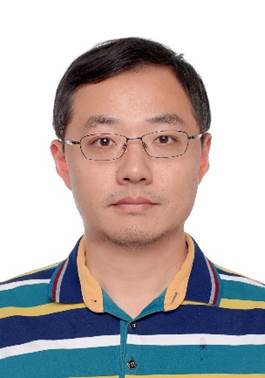检测到您当前使用浏览器版本过于老旧,会导致无法正常浏览网站;请您使用电脑里的其他浏览器如:360、QQ、搜狗浏览器的极速模式浏览,或者使用谷歌、火狐等浏览器。
 下载Firefox
下载Firefox
检测到您当前使用浏览器版本过于老旧,会导致无法正常浏览网站;请您使用电脑里的其他浏览器如:360、QQ、搜狗浏览器的极速模式浏览,或者使用谷歌、火狐等浏览器。
 下载Firefox
下载Firefox
北京大学定量生物学中心
学术报告
题 目: Deciphering Transcriptional Regulation via Single-Molecule Quantification of Transcription Factor Binding in situ
Associate Professor, Institute of Natural Sciences and the School of Physics and Astronomy at Shanghai Jiao Tong University
时 间: 11月27日(周一)13:00-14:00
地 点: 吕志和楼B101
主持人: 齐志 研究员
摘要:
Gene transcription is controlled by the binding of transcription factors (TFs) to specific DNA regulatory sequences. However, the kinetic mechanism underlying this process remains elusive due to the challenge of detecting TF binding signals of individual gene loci in a single cell. Here, we develop a single-molecule fluorescent imaging method to quantify the absolute molecule number of bound TFs, epigenetically modified histones, and nascent mRNAs at individual hunchback (hb) gene loci in early Drosophila embryos. We find that key TFs involved in hb regulation create a broad distribution of binding states through nonequilibrium cooperative binding, which is associated with the deprivation of specific histone modifications. Using theoretical analysis, we decipher how different TF binding states modulate the stochastic kinetics of hb transcription. These results provide a general framework for uncovering the mechanisms of complex gene regulation at the single-cell and single-molecule level.
报告人简介:
Dr. Heng Xu obtained his B.S. in Physics from Nanjing University in 2003 and Ph.D. in Physics from Brown University in 2010. He then took a postdoctoral position in the Department of Biochemistry & Molecular Biology at Baylor College of Medicine, where he received a Burroughs Wellcome Fund Career Award at the Scientific Interface in 2014. In 2017, he joined the faculty of the Institute of Natural Sciences and the School of Physics and Astronomy at Shanghai Jiao Tong University. His primary research goal is to understand the physical principles underlying living systems using quantitative experimental and theoretical approaches. His current research is aimed at deciphering the mechanism of transcriptional regulation of key segmentation genes in Drosophila melanogaster embryos, using high-resolution fluorescence imaging, quantitative image analysis, and stochastic modeling.
